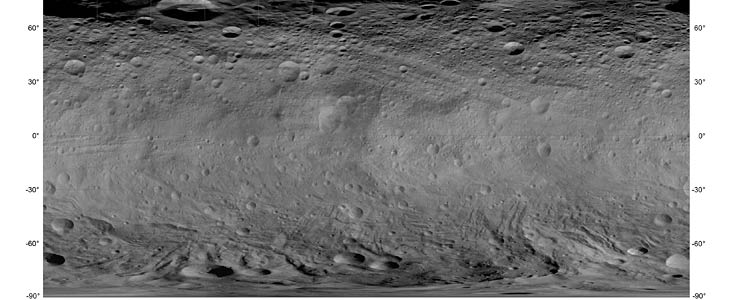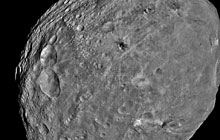- News
- Science
- Scientific Bodies
- Divisions
- Commissions
- Commission A1 Structure
- Commission A2 Structure
- Commission A3 Structure
- Commission A4 Structure
- Commission B1 Structure
- Commission B2 Structure
- Commission B3 Structure
- Commission B4 Structure
- Commission B5 Structure
- Commission B6 Structure
- Commission B7 Structure
- Commission C1 Structure
- Commission C2 Structure
- Commission C3 Structure
- Commission C4 Structure
- Commission D1 Structure
- Commission E1 Structure
- Commission E2 Structure
- Commission E3 Structure
- Commission E4 Structure
- Commission F1 Structure
- Commission F2 Structure
- Commission F3 Structure
- Commission F4 Structure
- Commission G1 Structure
- Commission G2 Structure
- Commission G3 Structure
- Commission G4 Structure
- Commission G5 Structure
- Commission H1 Structure
- Commission H2 Structure
- Commission H3 Structure
- Commission H4 Structure
- Commission J1 Structure
- Commission J2 Structure
- Commission J3 Structure
- Commission X1 Structure
- Commission X2 Structure
- Past Commission Organising Committees
- Working Groups
- Centres
- Scientific Meetings
- Rules & Guidelines
- General Assemblies
- Meeting Proposals
- Future IAU Meetings
- General Assemblies
- EC Meetings
- Officers' Meetings
- Regional Meetings
- Symposia
- Focus Meetings
- Institutional Meetings
- IAU Offices Meetings
- IAU-Sponsored Meetings
- Letters of Intent submitted for 2024
- Letters of Intent submitted for 2023
- Letters of Intent submitted for 2022
- Letters of Intent submitted for 2021
- Letters of Intent submitted for 2020
- Past IAU Meetings
- Templates
- Other Meetings
- Grants & Prizes
- Scientific Bodies
- Publications
- IAU Publications
- IAU Strategic Plan
- Symposia
- WGSBN Bulletins
- Regional Meetings
- Information Bulletins/Catalyst
- E-Newsletters
- Focus Meetings
- Transactions A
- Transactions B
- Related Publications
- GA Newspapers
- CAPjournal
- IAU Books
- Brochures
- IAU Offices
- WG Reports
- Commission Reports
- Division Reports
- Past IAU Publications
- Rules, Guidelines and Instructions for Proceedings
- Publishers
- IAU Publications
- Administration
- About the IAU
- Statutes & Rules
- IAU Policies
- IAU Executive Bodies
- IAU Secretariat
- Resolutions
- Members Administration
- Administrative Dates & Deadlines
- International Organisations Relations
- Donate to the IAU
- Training in Astronomy
- Astronomy for Education
- Astronomy for Development
- Astronomy for the Public
- Office for Astronomy Outreach
- FAQ
- Themes
- Satellite Constellations
- Astronomy in Everyday Life
- How to Report a Discovery
- Careers in Astronomy
- Defining our Place in the Cosmos
- The Constellations
- Light Pollution
- Measuring the Universe
- Near Earth Objects
- How to Participate in Astronomy Research
- Naming of Astronomical Objects
- Naming of Exoplanets
- Buying Star Names
- Naming Stars
- Pluto and the Solar System
- IAU Member Statistics
- Our Moon: the Moon
- Meteors & Meteorites: The IAU Definitions of Meteor Terms
- UNESCO-IAU Portal to the Heritage of Astronomy
- Social Media
- Past Events
- Call for Online Resources
- Astronomy@Home Awards
- Contact
ann14003 — Announcement

27 March 2014
New Coordinate System for (4) Vesta
The International Astronomical Union (IAU) Working Group on Cartographic Coordinates and Rotational Elements (WGCCRE) has adopted a new coordinate system for the asteroid (4) Vesta.
As one of the largest asteroids in the Solar System, (4) Vesta is a popular target for research. A new coordinate system is defined by equations that specify Vesta's prime meridian and pole position.
This new system is defined by the parameters:
α0 = 309°.031 ± 0°.01
δ0 = 42°.235 ± 0°.01
W = 285.39° + 1617°.3329428 d
Where d is the interval in days from the standard epoch, i.e. J2000.0=JD 2451545.0 (1 January 2000 12:00 Barycentric Dynamical Time) with α0 representing the right ascension of the positive pole, δ0 the declination of the positive pole and W the angle of the prime meridian measured from the node between the equator of the body and the standard terrestrial equator (as defined by Archinal et al., 2011).
This coordinate system is defined by assigning a positive longitude of 146° to the small crater on Vesta, named Claudia. This definition, following long-standing IAU and WGCCRE recommendations and past practice, keeps the prime meridian passing through the dark albedo feature known informally as Olbers Regio. This feature was first identified and defined as the location of the prime meridian by Thomas et al. (1997), and is easily identified in NASA/DLR/ASI Dawn mission images as an area of darker albedo consisting mostly of a degraded topographic depression on Vesta. This coordinate system will be known as the IAU Coordinate System for (4) Vesta (2014) to differentiate it from the earlier or later systems recommended for Vesta [1].
This coordinate system is the same as that proposed to the WGCCRE by the Dawn mission in October 2012. The WGCCRE at the time agreed that such a system did follow existing IAU and WGCCRE recommendations, and recommended that the Dawn mission use it for all of its publications in order to avoid confusion with other systems that have been proposed. This system has been used by the Dawn mission to publish their data to the NASA Planetary Data System (PDS). It is described internally as the Claudia Double-Prime system in (Li, 2012). [2]
Compared to the earlier values given by the WGCRRE (see Archinal et al., 2011), the IAU Coordinate System for (4) Vesta (2014) has an offset of 2.5° in pole position, an increase in rotation rate of 0.0001668°/d and a constant W term (or W0) decrease of 6.61°. The change in this latter value is mostly due to the change in pole position and the total change in rotation since J2000.0 due to the improved value for the rotation rate [3].
The international community is recommended to use the IAU Coordinate System for (4) Vesta (2014) for their research, in particular for identifying the coordinates of features on Vesta [4].
A full report from the WGCCRE is planned for 2014.
More information
The IAU is an international astronomical organisation of more than 10 000 professional astronomers from more than 90 countries. Its mission is to promote and safeguard the science of astronomy in all its aspects through international cooperation. The IAU also serves as the internationally recognised authority for assigning designations to celestial bodies and their surface features.
Notes
[1] Note however, that in following the IAU method, these systems are essentially indistinguishable from each other as higher accuracy and resolution data become available for Vesta.
[2] Note that the values used here are consistent with Table 1 of Li (2012), rather than the different values that appear in the text of that paper.
[3] The WG notes that further improved values for the pole position and spin rate have recently become available from Konopliv et al. (2013), both with and without a model for precession and nutation. The model without precession and nutation corresponds to that given here, but with updated parameter values that move the pole by 0°.009, and increase the rotation rate by 0.0001807 °/day. Rather than trying to derive an appropriate W0 value, we recommend the continued use of the parameter values given here (from Li, 2012), which should be sufficiently accurate for making products from Dawn mission or terrestrial observations of Vesta.
[4] The work naming the features on Vesta is done by the IAU Working Group for Planetary System Nomenclature (WGPSN, see the list of named features on Vesta at http://planetarynames.wr.usgs.gov/).
References
-
Archinal, B.A. et al. 2011, Report of the IAU Working Group on Cartographic Coordinates and Rotational Elements: 2009, Cel. Mech. & Dyn. Ast., 109, no. 2, February, 101-135, doi 10.1007/s10569-010-9320-4 (PDF1, PDF2)
-
Konopliv, A.S. et al. 2013, The Vesta gravity field, spin pole and rotation period, landmark positions, and ephemeris from the Dawn tracking and optical data. Icarus, http://dx.doi.org/10.1016/j.icarus.2013.09.005, in press 2013.
-
Li. J. 2012, Body‐Fixed Coordinate Systems for Asteroid (4) Vesta, Planetary Data System (link to PDF), September 18.
-
Thomas P. C. et al. 1997, Vesta: Spin Pole, Size, and Shape from HST Images, Icarus, 128, 88-94, doi 10.1006/icar.1997.5736.
Links
-
The web page for the IAU WGCCRE: http://astrogeology.usgs.gov/groups/iau-wgccre
Contacts
B. A. Archinal
Chair of the IAU WGCCRE
Tel: +1 928 556 7083
Fax: +1 928 556 7014
Email: barchinal@usgs.gov
Giovanni Valsecchi
President of IAU Division F on Planetary Systems and Bioastronomy
Tel: +39 06 4993 4188
Fax: +39 06 4993 4188
Email: giovanni@iaps.inaf.it
Lars Lindberg Christensen
IAU Press Officer
Garching bei München, Germany
Tel: +49 89 320 06 761
Cell: +49 173 38 72 621
Email: lars@eso.org
About the Announcement
Id:
ann14003
ann14003


